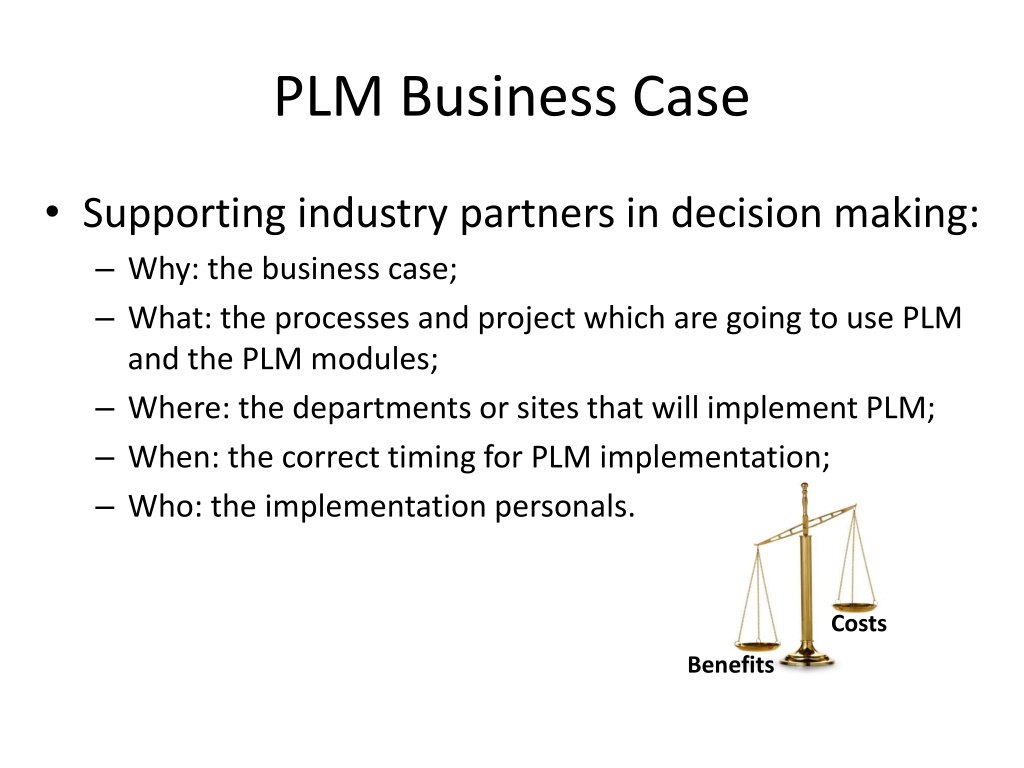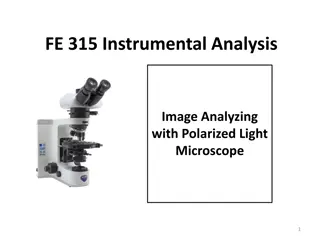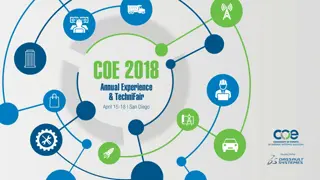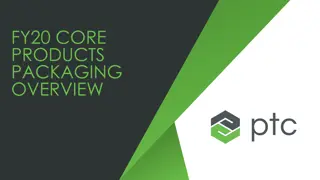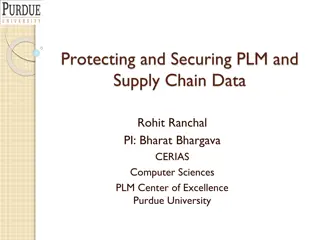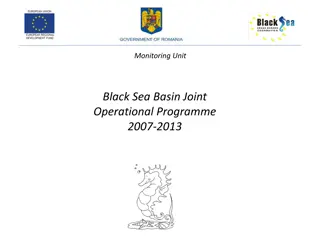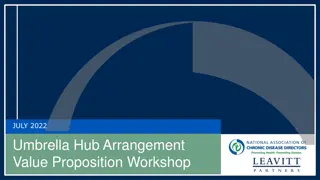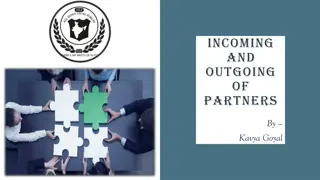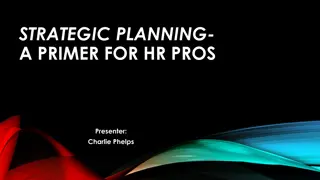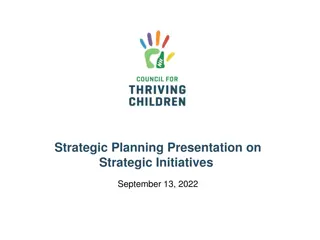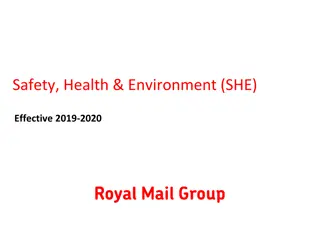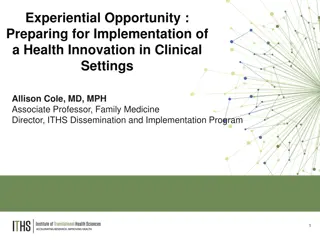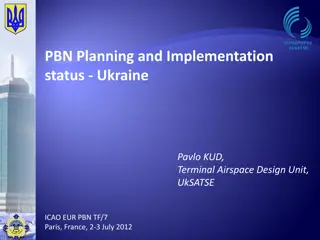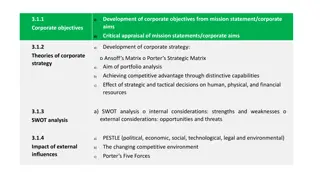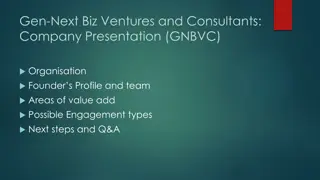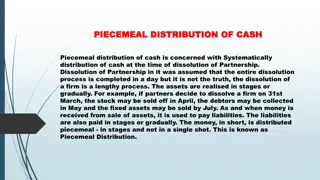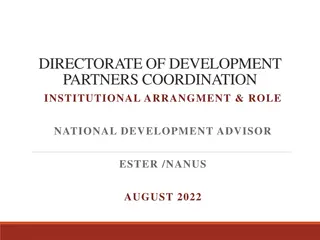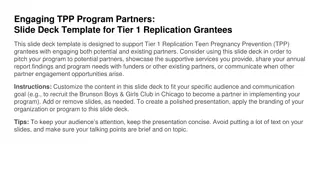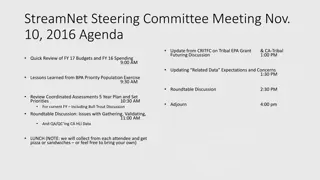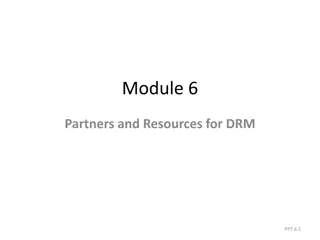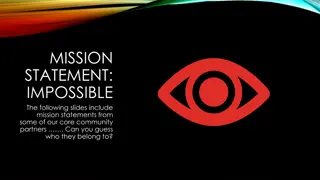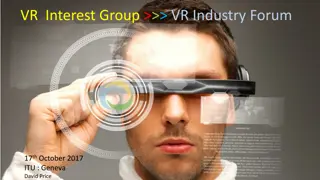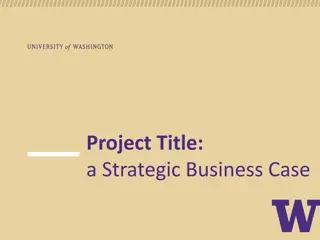Strategic PLM Implementation for Industry Partners: A Comprehensive Guide
This detailed content explores the strategic implementation of Product Lifecycle Management (PLM) to support industry partners in decision-making. It covers the business case, processes, project implementation, PLM modules, department/site implementation, timing considerations, personnel involvement, cost-benefit analysis, technology roadmap, and more, providing valuable insights for leveraging PLM effectively in business operations.
Download Presentation

Please find below an Image/Link to download the presentation.
The content on the website is provided AS IS for your information and personal use only. It may not be sold, licensed, or shared on other websites without obtaining consent from the author. Download presentation by click this link. If you encounter any issues during the download, it is possible that the publisher has removed the file from their server.
E N D
Presentation Transcript
PLM Business Case Supporting industry partners in decision making: Why: the business case; What: the processes and project which are going to use PLM and the PLM modules; Where: the departments or sites that will implement PLM; When: the correct timing for PLM implementation; Who: the implementation personals. Costs Benefits
PLM Business Case = ? BENEFITS COSTS Costs of PLM Ownership Business Performance The Organization software PLM Benefits for Implementation Process optimization Users Training Process Performance Data migration Product or Service Others
PLM Business Case Cost/Benefit Analysis for Audit Cost/Benefit Analysis for Implementation Cost/Benefit Analysis for Feasibility Discounted Cash Flows* Payback Period* * CIMdata, PLM Benefits Appraisal Guide, 5th Edition, Jan 2012
PLM Technology Roadmap Identify the needs and capability gaps to achieving innovation in Product Lifecycle Management (PLM) research through to 20?? Determine priority actions to meet these needs and build capability to enable innovation in PLM. Identify technology alternatives and milestones for meeting the needs and filling the gaps.
PLM Technology Roadmap Preliminary Activities Follow-up activities Development of the Roadmap 1. Identify the critical system requirements and their targets. 2. Specify the major technology areas. 3. Specify the technology drivers and their targets. 4. Identify technology alternatives and their time lines. 5. Recommend the technology alternatives that should be pursued. 6. Create the technology roadmap report. 1. Satisfy essential conditions 2. Provide leadership/ sponsorship 3. Define the scope and boundaries for the roadmap 1. Critique and validate the roadmap. 2. Develop an research plan. 3. Review and update.
PLM Technology Roadmap 1. Executive Summary 2. Purpose of the Report 3. Critical Requirements 3.1 Implementation 3.2 Interface and Integration 3.3 Security 4. Priority Technical Areas 4.1 Priority Technical Areas 4.2 Technology Drivers for Each Area 4.3 Technology Alternative for Each Area 4.4 Recommendations 5. Conclusions 6. Next Steps The Future of Product Lifecycle Management
